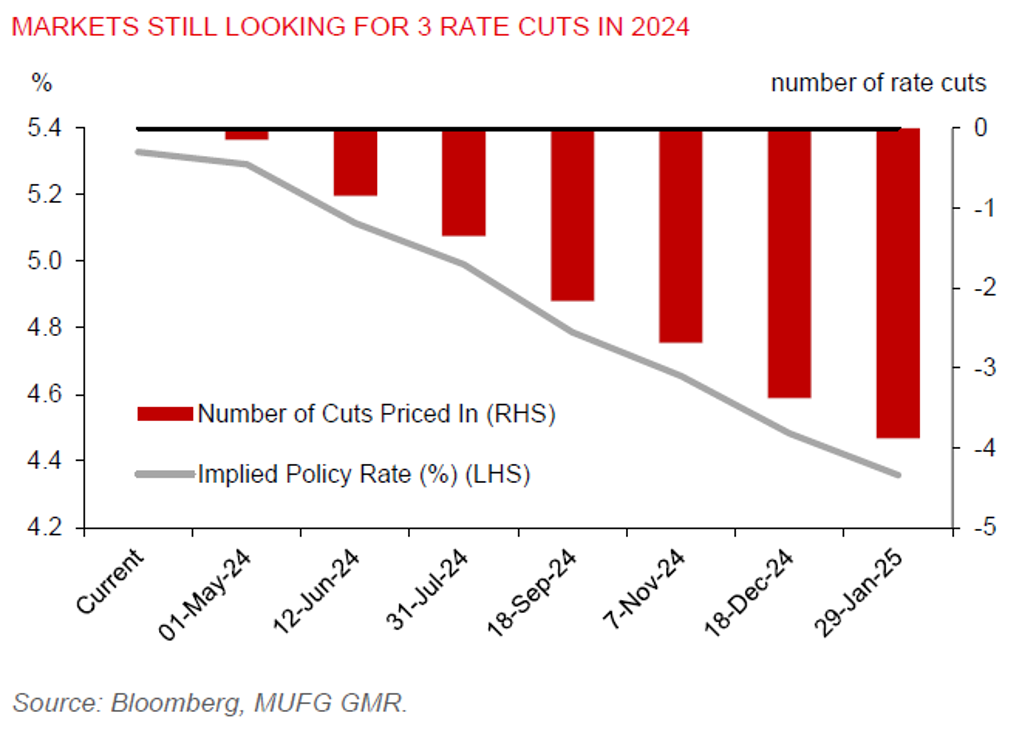Ahead Today
G3: US: initial jobless claims, manufacturing PMI surveys, leading index, existing home sales
Asia: India PMI surveys, Taiwan’s quarterly monetary policy meeting
Market Highlights
The US Fed kept its policy rate unchanged at 5.25%-5.50% in March and signaled that it remains on track to cut rates “at some point this year”. The dot plot continues to show the Fed cutting rates 3 times, though the median dot plot for 2025 has drifted to 3 cuts, compared to 4 cuts in December 2023. The recent hotter than expected inflation data have not changed Fed’s expectations for rate cuts this year. The Fed thinks it will be a bumpy road to bring inflation down. They have also reiterated it will only lower interest rates when policymakers are more confident about inflation moving sustainably back to 2%.
The Fed has also raised its outlook for US GDP growth. And it has discussed about slowing the pace of reduction to its US$7.5tn balance sheet to reduce the possibility of money markets experiencing stress. Markets have increased the probability that the Fed will start cutting rates in June, while the broad US dollar index strengthened.

Regional FX
Asian currencies broadly gained versus the US dollar with KRW (+0.8%), MYR (+0.6%) outperforming regional peers. Meanwhile, USDCNH pair has continued to trade above the 7.20 level.
The PBOC has kept the 1-year and 5-year loan prime rates unchanged at 3.45% and 3.95%, respectively. BI has also kept its policy rate unchanged at 6%. There’s also no change to the BI’s outlook for GDP growth of 4.75%-5.5% in 2024 and inflation to stay within its target range of 1.5%-3.5%. BI rate cut is not likely for now as the Fed is taking a cautious approach to cutting rates. Meanwhile, Indonesia’s election commission has officially declared that Prabowo Subianto won the presidential election held on 14 February with 59% of the votes.
Taiwan’s central bank will meet later today, and we expect the policy rate will remain at 1.875%. Export orders (in USD terms) fell 3.9%yoy in January-February, mainly due to a sharp drop in orders from Europe. Orders from the US were also down by 1.3%yoy, but those from China (including HK) and ASEAN economies rose 11.3%yoy and 70.4%yoy, respectively. The Ministry of Economic Affairs expects positive y/y growth in export orders in the coming months.

